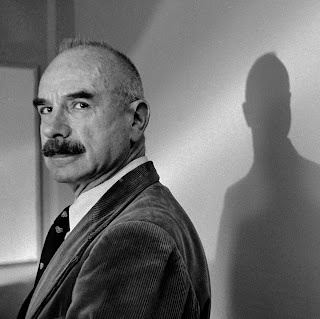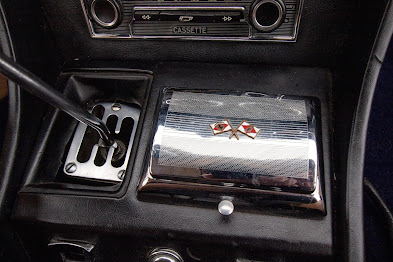Fluff (pronounced fluhf)
(1) Light, downy particles, as of cotton.
(2) A soft, light, downy mass.
(3) In slang, a cloth diaper (nappy).
(4) In slang (New England region in the US), marshmallow crème,
thus the local delicacy the “fluffernutter” (a sandwich made with peanut butter
and marshmallow fluff), once a favorite of children’s school lunches but now
likely to attract “mother shaming” on
Instagram.
(5) In LGBTQQIAAOP slang, the passive partner in a lesbian
relationship, known also as a “ruffle”.
(6) In slang, (Australia, New Zealand, Canada), a fart.
(7) In the slang of pop-culture fandom, fan fiction which
(in whole or in part) is “sweet and feel-good” in tone, usually involving
romance.
(8) In the slang (UK) of the role-playing game community,
a form of role-playing which is inconsequential and not related to the plot and
used sometimes in the context of (but not limited to) filling time.
(9) In UK slang short change deliberately given by a
railway clerk (keeping the money for themselves), an example of a “deliberate
fluff” (obsolete).
(10) Figuratively, something of no consequence;
insubstantial.
(11) Figuratively (of literature, political argument,
philosophy etc), a slight work or one of dubious artistic or intellectual
value; unscholarly (used also as a polite euphemism for “bullshit (BS)” which
is less explicit than “cattle feces” (“cattle faeces in non-US English).
(12) An error (flub, lapse, blooper, blunder, boo-boo,
defect, error, fault, faux pas, gaffe, lapse, mistake, slip, stumble, brain-fart,
brain-explosion), especially an actor's memory lapse in the delivery of lines
(often in the form “fluffed their lines”.
(13) A
young woman (often as “a bit of fluff”), the implication being of her providing
a brief, amusing diversion rather than one sought for a permanent relationship)
(14) To make into fluff; shake or puff out (feathers,
hair etc) into a fluffy mass (often followed by up).
(15) To make a mistake.
(16) To become fluffy; move, float, or settle down like
fluff.
1780s: From the earlier (or perhaps contemporary) floow (woolly substance, down, nap, lint (which appeared also as flough, flue & flew)), possibly from the West Flemish vluwe (an imitative modification of floow), of uncertain origin but which may be from the French velu (hairy, furry), from the Latin villūtus (having shaggy hair), from villus (shaggy hair, tuft of hair) and may be compared with the Old English flōh (that which is flown off, fragment, piece), linked to the later “flaw”. Although undocumented, etymologists generally conclude the word may have been a blend of flue + puff. “Fluffy stuff” is a common phenomenon in the natural world and descriptors existed in many European languages including the possibly onomatopoeic Middle Dutch vloe, the dialectal English floose, flooze & fleeze (particles of wool or cotton; fluff; loose threads or fibres), the Danish fnug (down, fluff) and the Swedish fnugg (speck, flake). Traces of the sound of the word “fluff” are found in other languages including the Japanese フワフワ (fuwafuwa) (lightly, softly), the Hungarian puha (soft, fluffy), the Polish puchaty (soft, fluffy) and the Romanian puf (down; peachfuzz; soft hair of some animals; powderpuff). Fluff & fluffing are nouns & verbs, fluffed is a verb, fluffiness & fluffer are nouns, fluffless & flufflike are adjectives, fluffy is an adjective (and non-standard) noun and fluffily is an adverb; the noun plural is fluffs.
Fluffied: Lindsay Lohan in bikini embellished with faux fur, photo-shoot for the fifth anniversary of ODDA magazine, April 2017.
In idiomatic use there’s “fluff around” of “fluff about” (ineffectually
to act or waste time”, “fluff off” (an affectionate form of “fuck off”), “fluff-ball”
or “ball of fluff” (a fluffy kitten or puppy with the quality of “cuteness”), “bum
fluff” or “belly-button fluff” (small particles the fabric of clothing which
accumulates in body crevices), “fluffhead” (someone vague or confused
(synonymous with “airhead”), “fluff up” (a polite version of “fuck up”). The term “fluffy bunny” isn’t from lagomorphology
(the scientific study of rabbits (small mammals in the family Leporidae))
although it may be assumed it’s often heard in pet shops. Fluffy bunny (also as “fluff bunny” & “fluffbunny”)
was an adaptable noun used to mean: (1) a synonym of chubby bunny (a competitive
eating game in which contestants had to pronounce words or phrases (such as “Irish
wristwatch”) while holding increasing numbers of marshmallows is their mouth),
(2) in the strange world of quantum mechanics, quantum entanglement which in
theory can occur in theory never arises because of other physics and (3) a derogatory
descriptor of a casual, naive practitioner of Wicca (or other neo-pagan
religion), especially one deemed to have only a superficial understanding. The slang “bit of fluff” (young woman with
who one is enjoying or planning a brief affair) was first recorded in 1903
while the use to describe marshmallow confection seems to date from at least 1920,
noted in Massachusetts. The verb in the
sense of “to shake into a soft mass” was in use by 1875 (directly from the
noun) while the meaning “make a mistake” dates from 1884 as theater slang to
refer to acts who had forgotten their lines.
The adjective fluffy (containing or resembling fluff) came into use in
the 1820s.
Watergate Fluff
Watergate fluff is one of the alternative terms for the dish “Watergate Salad”, the others including Green Fluff, Green Goddess, Fluff Salad and Funeral Salad, the last picked up reputedly because it was so often served at wakes. It’s not clear how the culinary delight came to be called “Watergate Salad” although there’s no doubt the use was triggered by some association the Watergate scandal of the early 1970s which revolved around attempts by the administration of Richard Nixon (1913-1994; US president 1969-1974) to “cover up” the involvement of operatives connected to the White House with the break-in in June 1972 of the Democratic National Committee (DNC) headquarters in Washington DC’s Watergate Building. Interestingly, although the scandal (in the public perception although the legal proceedings would last longer) ended in August 1974 when Nixon resigned, the first known use of the term “Watergate Salad” dates from 1975 although in September 1974, Maryland's Hagerstown Daily Mail had published the recipe for “Watergate Cake”, also a similarly green-tinted dessert made with pistachio pudding in the mix and sometimes the icing.
The dish however predates the term. Some claim the Kraft Foods Corporation deserves credit (apparently as a proud boast rather than an admission of guilt) as the creator because in 1975 they published a recipe called “Pistachio Pineapple Delight” as part of a promotional campaign to support the release that year of their “Pistachio Pudding Mix” (something with a long tradition, a whipped cream and pineapple concoction detailed in a Kansas newspaper in 1913, the year Richard Nixon was born). At that point, history and myth become hard to separate, one story saying the food editor of the Chicago Tribune named it to stimulate interest, suggesting it was the ideal snack to enjoy while watching the televised hearings of proceedings pursuant to the scandal while another claimed it was associative because the Watergate Hotel (in the infamous building) served the salad on their popular weekend buffets; no menus appear to have survived to prove or disprove that one. Best of was the link was because the salad was “full of nuts” (like the crew involved in the scandal, including the memorable lawyer and Watergate conspirator & burglary coordinator G Gordon Liddy (1930–2021) who wasn’t really “a nut” but is often portrayed as one). True or not, that’s the one which deserves to be accepted.
Aleita Dupree's Watergate Salad recipe
Ingredients
1 (3 ½ oz) box of instant pistachio pudding mix.
1 (20 oz) can of crushed pineapple with juice (most use
sweetened).
1 (8 oz) container of cool whip, thawed.
1 heaped cup of miniature marshmallows.
½ cup of chopped pecan nuts.
Stemmed maraschino cherries for garnish (optional).
(1) In glass serving bowl, mix crushed pineapple and
juice with pistachio pudding mix. Stir
pudding until mix completely is dissolved and mixture is smooth.
(2) Fold in the thawed cool whip. Gently fold until pudding and cool whip is
completely blended.
(3) Add miniature marshmallows and pecans. Cover and chill until salad is set (should
take up to 30 minutes).
(4) To serve, garnish with stemmed cherries and extra
chopped pecans (if desired).
Fluff in fashion
Fluffiness in fashion: Lindsay Lohan in Falling for Christmas (Netflix, 2022, left) and in New York to promote Irish Wish (Netflix, 2024, right). The fluffy cream coat is by David Koma (Davit Komakhidze (Georgian: დავით კომახიძე); b 1985)) a London-based, Georgian-born fashion designer (the label of his fashion house is stylized as DΛVID KOMΛ). The crystal payette-embroidered layered cup bra hints at the profile of the customer base; it’s on sale at US$1250 (down from US$1750). The fashion business is regarded by some as a bit “fluffy” (frocks and such) compared with “hard” industries such as heavy engineering or nuclear weapons construction but the annual turnover of the global fashion industry is substantial. The numbers bounce around a bit because it difficult to determine where “fashion” ends and “commodities” begin but estimates between US$1.5-2.5 trillion are widely quoted (In financial use, one trillion = 1,000,000,000,000 (one million million or 1,000 billion)).































